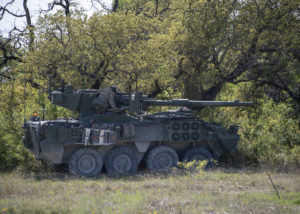
By Capt. Christina Smith, Aviation Test Directorate, U.S. Army Operational Test Command
FORT HOOD (Now designated Fort Cavazos), Texas — During the largest Aviation test of 2019, Apache and Unmanned Aerial System pilots joined combat ground forces to test an upgraded Apache helicopter version.
The complex operational test of the AH64E Version 6 Apache helicopter upgraded improved target acquisition and joint interoperability, while taking a look at its increased lethality and survivability on the modern battlefield.
“The operational test collected data on the ability of an AH-64E Version 6-equipped unit to conduct attack, reconnaissance, and security missions in land and maritime environments,” said Mr. Larry Hood, a Supervisor Military Test Plans Analyst with the U.S. Army Operational Test Command’s Aviation Test Directorate.
OTC aviation testers employed Soldiers from 1st Air Cavalry Brigade and 3rd Cavalry Regiment from Fort Hood (Now designated Fort Cavazos); the 1st Infantry Division at Fort Riley, Kansas; and the 4th Infantry Division at Fort Carson, Colorado to provide pilots, ground forces, and Unmanned Aerial Systems to complete testing.
One 1st Air Cav. Pilot described some of the key Apache upgrades.
“The AH-64Ev6 showcases a number of enhanced technologies that support not only aircrew but the ground force commander,” said 1st Lt. Clayton Jaksha.
“One of the key upgrades is the modernized day side assembly (MDSA) which greatly extends standoff and is a game-changer against a complex and hybrid threat.”
Technical aspects of the AH64E v6 upgrades include an improved Cognitive Decision Aid System, software upgrades, and an upgraded mission processor.
Also important is the reduced downtime for maintenance, and automation provided to lower crew task load, according to Col. Jason Blevins, AVTD Director.
“Some of the critical capabilities are improvements in our interoperability with unmanned aircraft systems, joint interoperability and the effects that brings in our ability to conduct multi-domain operations as opposed to unified land operations,” Blevins said.
All of that translates into Aviators being able to operate in a wide battlefield area for over extended time while being able to attack to destroy, defeat, disrupt, or delay enemy forces using everything in their arsenal.
Hood said to make testing as operationally realistic as possible, AVTD personnel created phased attack, deliberate attack, and maritime attack scenarios to test the Apache’s ability to integrate all the upgrades in attack, reconnaissance, and security missions.
Ground threat vehicles equipped with multiple laser engagement systems were also added to give real-time feedback on target acquisition of the AH64E v6.
“In order to conduct the most realistic testing we were required to conduct the test in multiple locations,” Hood said.
~~
About the U.S. Army Operational Test Command:
Operational testing began Oct. 1, 1969, and as the Army’s only independent operational tester, OTC is celebrating “50 Years of Operational Testing.” The unit enlists the “Total Army” (Active, National Guard, and Reserve) when testing Army, joint, and multi-service warfighting systems in realistic operational environments, using typical Soldiers to determine whether the systems are effective, suitable, and survivable. OTC is required by public law to test major systems before they are fielded to its ultimate customer – the American Soldier.
The Aviation Test Directorate at West Fort Hood (Now designated Fort Cavazos), Texas, plans and conducts operational tests and reports on manned and unmanned aviation-related equipment to include attack, reconnaissance, cargo and lift helicopters, fixed wing aircraft, tactical trainers, ground support equipment, and aviation countermeasure systems.








